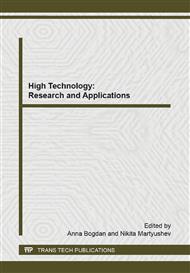p.3
p.8
p.13
p.19
p.24
p.29
p.34
p.39
Design and Investigation of Hard Metal Composites Modified by Nanoparticles
Abstract:
The influence of nanoparticles additives on the hard metals properties has been investigated. Nanoparticles introduced into a binder of average size decrease the metal interlayer and therefore increase the strength of binder and composite as a whole. The reduction of the carbide grain average size was found as well (owing to nanoparticles blocking influence on re-crystallization). Besides, the internal thermotension and adhesion wear decrease at high speed cutting (especially for stainless steel) in comparision with base hard metals. The test results display that the modification through ultrafme particles enables to improve the main properties: wear resistance – 1.6 - 2 - fold; fracture toughness – 1.8 - 2 - fold; transverse rupture toughness - at 25 - 50%; tool life – 1.3 - 4 - fold.
Info:
Periodical:
Pages:
13-18
Citation:
Online since:
September 2014
Price:
Сopyright:
© 2014 Trans Tech Publications Ltd. All Rights Reserved
Share:
Citation:


